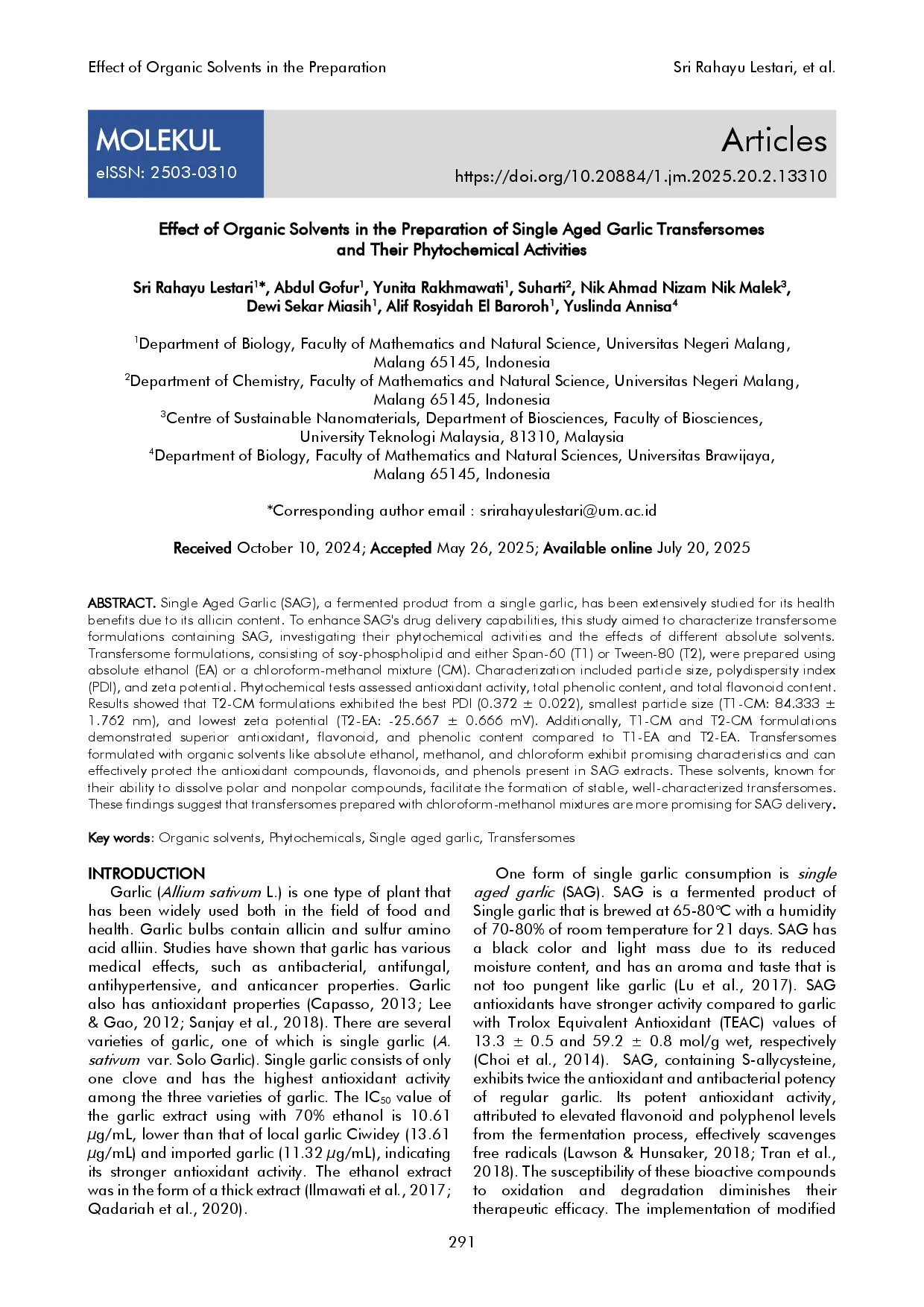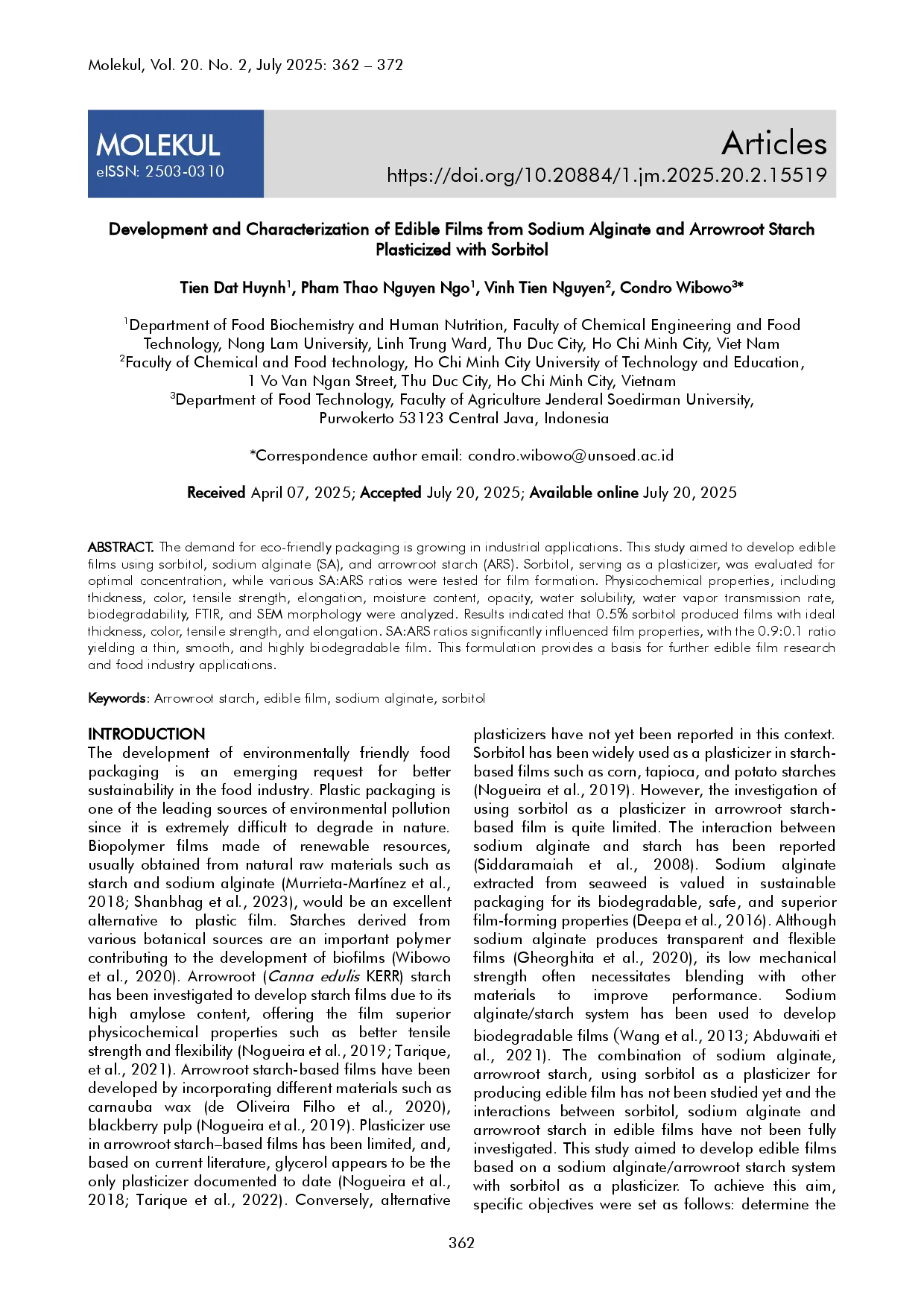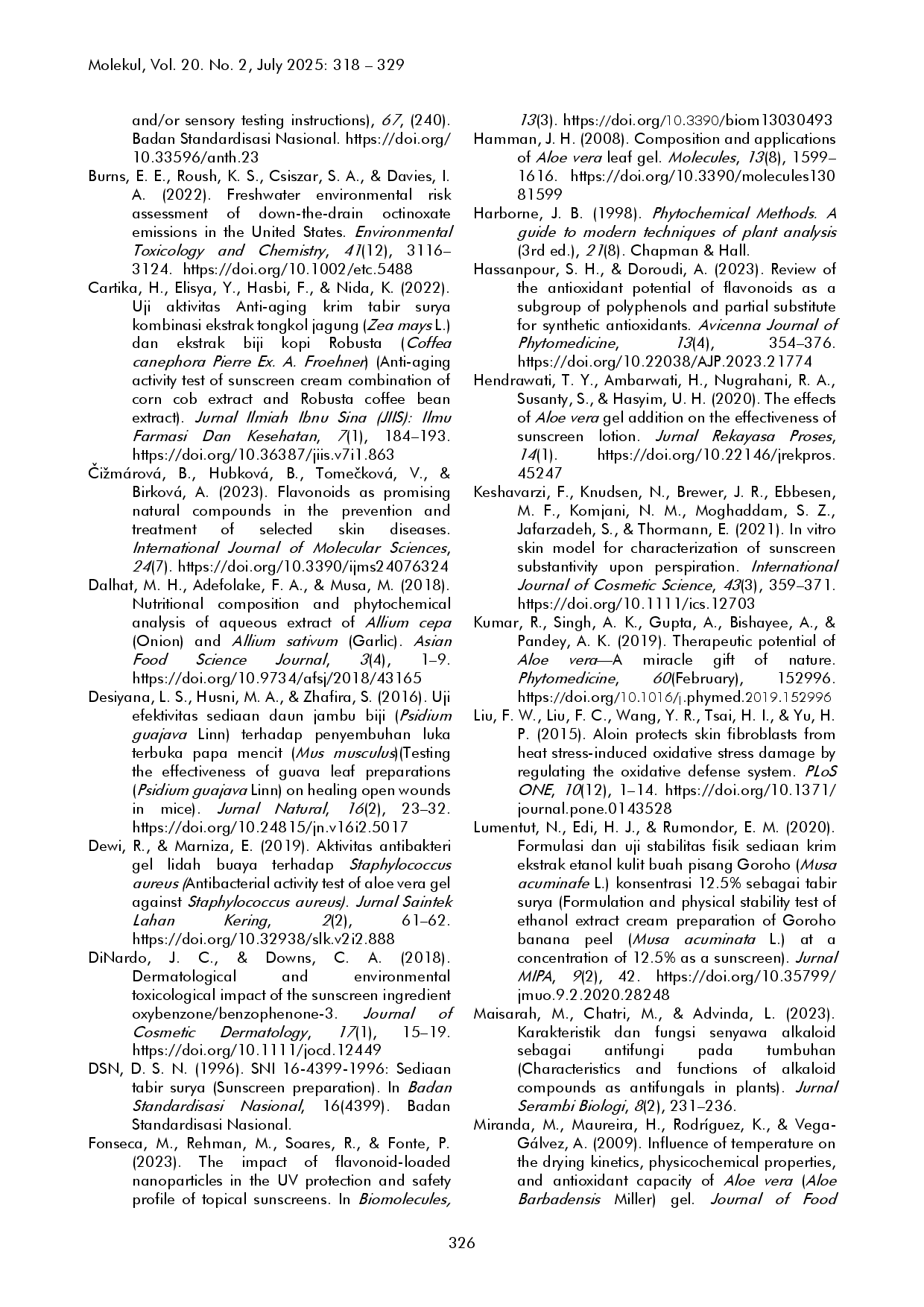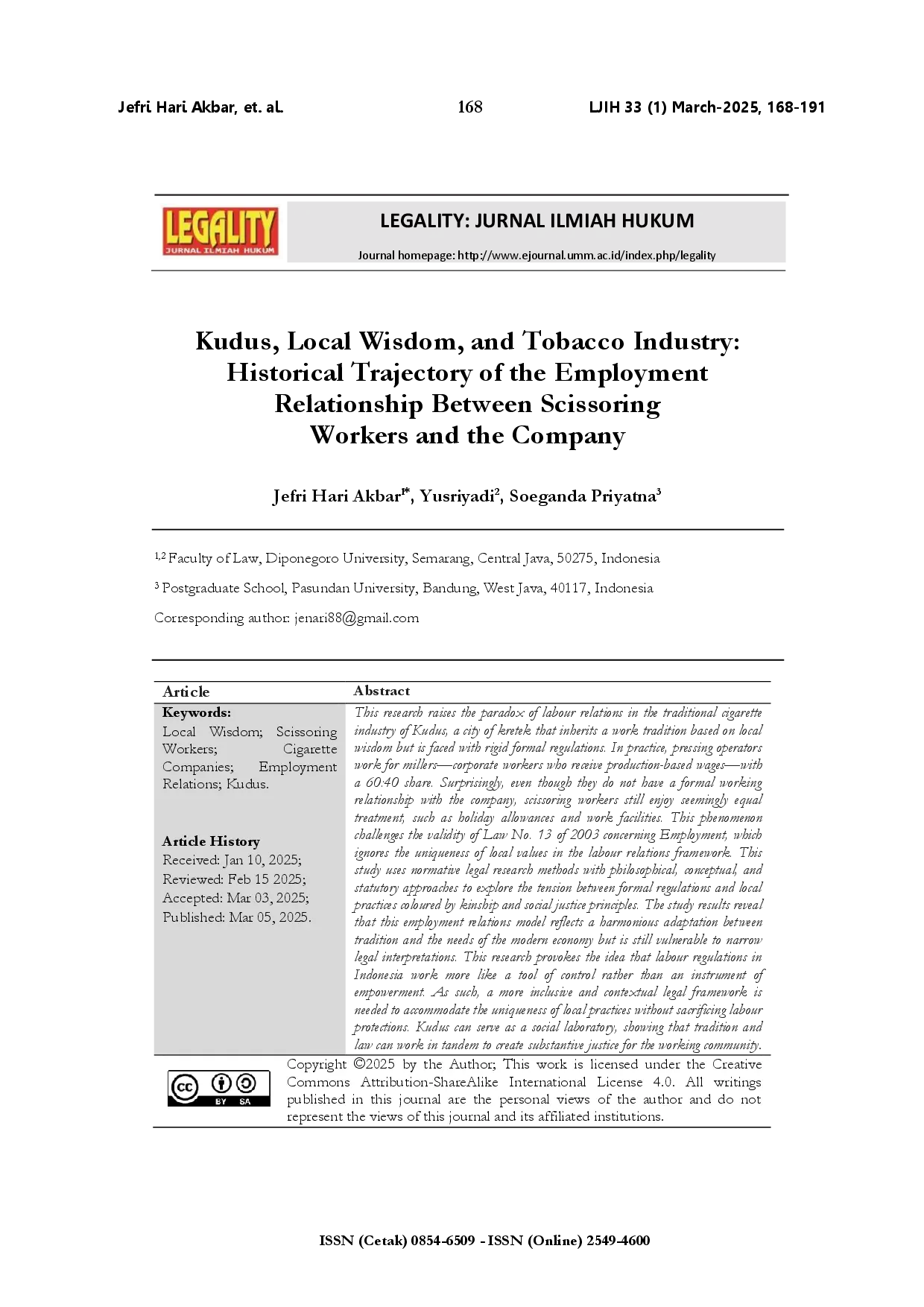UNSOEDUNSOED
JOS | Universitas Jenderal SoedirmanJOS | Universitas Jenderal SoedirmanThe Aglaia species, which contains triterpenoids, is the most numerous in the Meliaceae family. Aglaia foveolata (A. foveolata) is a type of plant that has many benefits, as medicinal ingredients. The potential of this plant is inseparable from the content of various bioactive compounds. This study aims to isolate, characterize the active compound from the twigs of A. foveolata and test its activity as an antibacterial. Three dammarane-type triterpenoids were isolated from the A. foveolata twigs which is, namely dammar-24-en-3β,20-diol (1), an epimeric mixture of shoreic and eichlerianic acid (2, 3). Their chemical structures were determined based on spectroscopic data using infrared, high-resolution mass spectrometry, and including one and two-dimensional NMR techniques, as well as through data comparison of the reported compound. Compound 1 was reported for the first time to be successfully isolated from this species. All these substances were tested for the first time for their antibacterial activity against two Gram-positive bacteria Staphylococcus aureus and Bacillus subtilis and two Gram-negative bacteria Escherichia coli and Pseudomonas aeruginosa, through this study. Compound 1 was inactive, the epimeric mixture of 2 and 3 showed moderate antibacterial activity with a minimum inhibitory concentration (MIC) value ranging from 31.7 to 126.6 ppm, particularly against S. aureus with a MIC value of 31.7 ppm.
The study successfully isolated three dammarane-type triterpenoids from the twigs of Aglaia foveolata, including dammar-24-en-3β,20-diol (1) and an epimeric mixture of shoreic and eichlerianic acid (2, 3).Compound 1 was isolated from this species for the first time.The epimeric mixture of compounds 2 and 3 exhibited moderate antibacterial activity, particularly against Staphylococcus aureus, with a minimum inhibitory concentration (MIC) of 31.
Penelitian lebih lanjut perlu dilakukan untuk menguji aktivitas antibakteri dari senyawa 2 dan 3 terhadap berbagai jenis bakteri patogen lainnya, termasuk bakteri yang resisten terhadap antibiotik konvensional, guna mengeksplorasi potensi mereka sebagai agen antibakteri baru. Studi mendalam mengenai mekanisme aksi senyawa 2 dan 3 dalam menghambat pertumbuhan bakteri perlu dilakukan, misalnya dengan meneliti interaksi senyawa tersebut dengan target molekuler pada bakteri, seperti dinding sel atau protein esensial, untuk memahami cara kerja mereka secara lebih rinci. Pengembangan formulasi yang meningkatkan kelarutan dan bioavailabilitas senyawa 2 dan 3, seperti penggunaan nanopartikel atau sistem penghantaran obat lainnya, dapat dilakukan untuk meningkatkan efektivitas antibakteri mereka dan memungkinkan aplikasi klinis yang lebih luas. Penelitian ini dapat diperluas dengan menguji aktivitas sinergis antara senyawa 2 dan 3 dengan antibiotik lain yang sudah ada, dengan tujuan untuk meningkatkan efektivitas pengobatan infeksi bakteri dan mengurangi risiko resistensi antibiotik.
- Home Page. home page foundation profit organization govern digital object identifier system behalf agencies... Doi.OrgHome Page home page foundation profit organization govern digital object identifier system behalf agencies Doi Org
- Antibiotics | An Open Access Journal from MDPI. antibiotics open access journal mdpi journals active... mdpi.com/journal/antibioticsAntibiotics An Open Access Journal from MDPI antibiotics open access journal mdpi journals active mdpi journal antibiotics
- DOI Name 10.22146 Values. name values home handbook factsheets faqs resources users members area index... doi.org/10.22146DOI Name 10 22146 Values name values home handbook factsheets faqs resources users members area index doi 10 22146
- Bot Verification. verification verifying robot doi.org/10.31788/RJCBot Verification verification verifying robot doi 10 31788 RJC
| File size | 369.93 KB |
| Pages | 10 |
| DMCA | ReportReport |
Related /
UNSOEDUNSOED Hasil penelitian menunjukkan bahwa Sonneratia alba mengandung senyawa bioaktif dengan potensi antioksidan dan interaksi molekuler yang kuat, sehingga berpotensiHasil penelitian menunjukkan bahwa Sonneratia alba mengandung senyawa bioaktif dengan potensi antioksidan dan interaksi molekuler yang kuat, sehingga berpotensi
UNSOEDUNSOED Urease P50 yang terimmobilisasi dapat digunakan kembali hingga 7 kali dengan mempertahankan 51 % aktivitas awal. Analisis Scanning Electron MicroscopyUrease P50 yang terimmobilisasi dapat digunakan kembali hingga 7 kali dengan mempertahankan 51 % aktivitas awal. Analisis Scanning Electron Microscopy
UNSOEDUNSOED Formulasi T1-CM dan T2-CM menunjukkan aktivitas antioksidan, flavonoid, dan fenol yang lebih baik dibandingkan T1-EA dan T2-EA. Pelarut organik sepertiFormulasi T1-CM dan T2-CM menunjukkan aktivitas antioksidan, flavonoid, dan fenol yang lebih baik dibandingkan T1-EA dan T2-EA. Pelarut organik seperti
UNSOEDUNSOED Penelitian ini bertujuan untuk mengembangkan film yang dapat dimakan menggunakan sorbitol, natrium alginat (SA), dan pati suji (ARS). Sorbitol, yang berfungsiPenelitian ini bertujuan untuk mengembangkan film yang dapat dimakan menggunakan sorbitol, natrium alginat (SA), dan pati suji (ARS). Sorbitol, yang berfungsi
Useful /
UNSOEDUNSOED Analisis fitokimia preliminer dengan HPTLC mengidentifikasi flavonoid, diterpen, dan antrakuinon, dan semua minyak esensial menunjukkan aktivitas antioksidanAnalisis fitokimia preliminer dengan HPTLC mengidentifikasi flavonoid, diterpen, dan antrakuinon, dan semua minyak esensial menunjukkan aktivitas antioksidan
UNSOEDUNSOED Selain itu, copigmentasi ini menyebabkan efek bathokromik, menggeser penyerapan ke panjang gelombang yang lebih panjang akibat perubahan di lingkunganSelain itu, copigmentasi ini menyebabkan efek bathokromik, menggeser penyerapan ke panjang gelombang yang lebih panjang akibat perubahan di lingkungan
UNSOEDUNSOED Formula dengan ekstrak bawang putih dan bawang Bombay memiliki nilai SPF ultra-proteksi, meskipun efektivitasnya menurun dengan meningkatnya konsentrasiFormula dengan ekstrak bawang putih dan bawang Bombay memiliki nilai SPF ultra-proteksi, meskipun efektivitasnya menurun dengan meningkatnya konsentrasi
UMMUMM Menariknya, meskipun mereka tidak memiliki hubungan kerja formal dengan perusahaan, pekerja pemotong masih menikmati perlakukan yang terlihat setara, sepertiMenariknya, meskipun mereka tidak memiliki hubungan kerja formal dengan perusahaan, pekerja pemotong masih menikmati perlakukan yang terlihat setara, seperti







